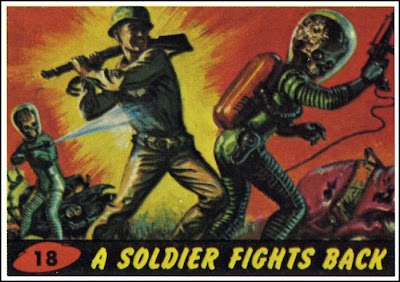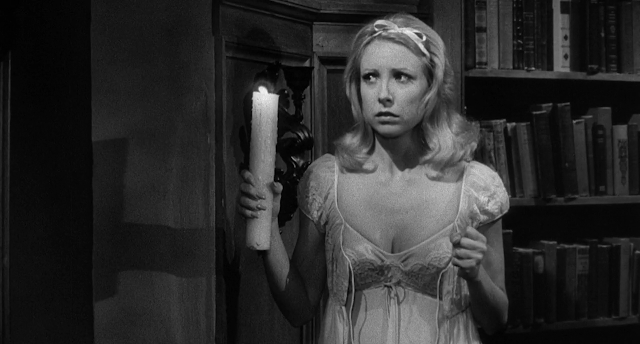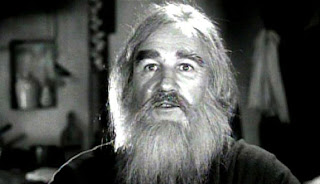I've given Frankenstein's Monster the evening off as he's had a busy month and I figured he may need to recharge his batteries, so to speak. Tonight we take a look back at some fairly recent history and history pertaining to fear of the other.
Fear of the extra-terestrial.
Fear of the invader.
And in particular:
The Martian.
SEVENTY-FOUR.
That’s the number of years it’s been since Orson Welles broadcast THE WAR OF THE WORLDS as an episode of the American radio drama anthology series The Mercury Theatre on the Air and was a production of CBS radio. It was an adaptation of H.G. Wells’ novel THE WAR OF THE WORLDS (1898).
The first forty minutes of the hour long broadcast were presented as a series of news bulletins, which convinced some in the public that an actual alien invasion by Martians was under way. Another contributing factor for this misunderstanding was that THe Mercury Theatre on the Air was a show without commercial interruption.
Despite some accounts, it is unclear the extent to which listeners were panicked. In the days that followed the adaptation, there was widespread outrage and panic by certain listeners who had believed the events on the radio were real, however. The program’s format was described as cruelly deceptive by some. This secured Orson Welles’ fame.
Here’s the broadcast as it was heard those many years ago:
HIstorical links examining the event:
FIFTY.
This is the number of years it has been since TOPPS put out a series of fifty-five trading cards depicting an invasion of earth by extra-terestrials from Mars. MARS ATTACKS was thenameof that series. And it is one of the most controversial card series in history.
The cards depict the invasion of Earth by cruel and ugly Martians who try to take over by violent and terrible means. Futuristic battle scenes between ray gun toting Martians and soldiers with conventional weapons. The story of the card set ends with a combined Earth invasion fleet attacking Mars and completely annihilating the planet.
The cards were popular with kids, but their gore and implied sexual content caused an outcry from parents and lead the company to halt production of the series. The cards became sought after collectors’ items.
Wally Wood, Bob Powell and Norm Saunders were the artists for this beautifully depicted science fiction horror show. Wood providing the layouts and designs, Powell mostly finalizing the layouts and Saunders providing the paints.
After a series of cards that continued the tale of he original set, comic books and a 1996 film by Tim Burton, merchandising and popularity of the card series boomed again.
To celebrate the fiftieth anniversary of the card collection, a reprinting of the originals has been done as has a very nifty little hardcover book depicting the art of each card in great detail and with insightful introductions and examinations of the pencil art behind the painted art, cards that were cut from the set among other things. The book is entitled, simply, MARS ATTACKS and was put out by Abrams.
And don't forget:
Wednesday, October 31, 2012 on TCM
6:30am - LONDON AFTER MIDNIGHT (1927)
7:30am - THE GHOUL (1933)
9am - HOUSE OF DARK SHADOWS (1970)
11am - REPULSION (1965)
1pm - DEMENTIA 13 (1963)
2:30pm - THE LAST MAN ON EARTH (1964)
4pm - THE DEVIL BAT (1940)
5:15pm - WHITE ZOMBIE (1932)
6:30pm - THE BODY SNATCHER (1945)
8pm - FRANKENSTEIN (1931)
9:30pm - SON OF FRANKENSTEIN (1939)
11:15pm - THE WOLF MAN (1941)
12:30am - THE MUMMY (1932)
2am - THE MUMMY’S HAND (1940)
3:15am - ISLAND OF LOST SOULS (1933)
4:30am - THE INVISIBLE MAN (1933)





























































